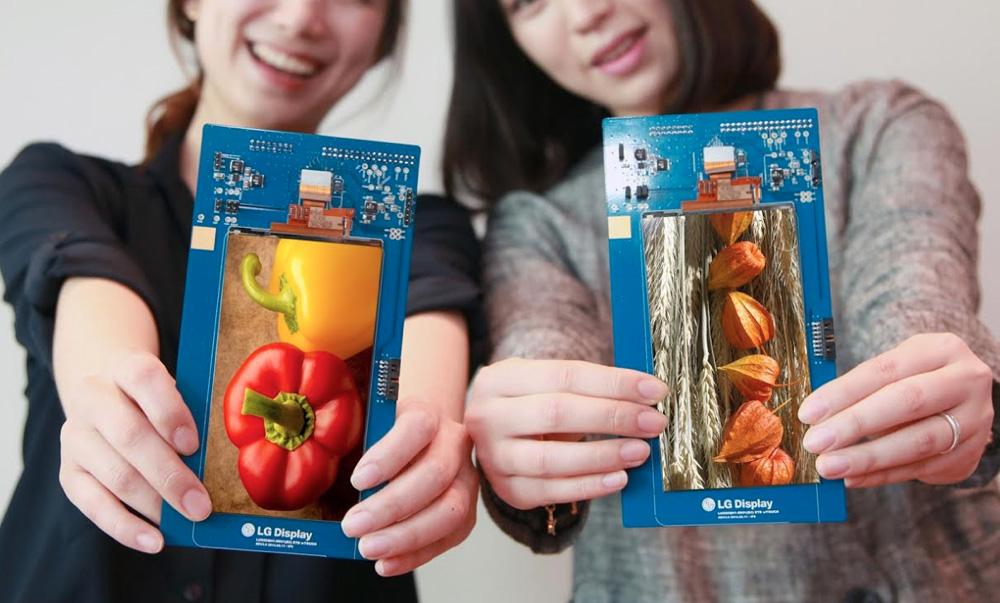
LG is known for trickling out details of its new high-end smartphones in the weeks leading up to their debut, and the G3 is no different.
LG Display tonight announced that its 5.5-inch Quad HD AH-IPD LCD screen has been certified by NEMKO, a Norwegian organization that tests and certifies electrical products. The display has a resolution of 2560x1440, a 1.2mm thickness and a 1.15mm bezel.
So when might you actually see this high-res and crazy thin panel on a smartphone in your pocket? LG says that the display will hit mass production “shortly” and that it’ll be formally unveiled in “the forthcoming LG’s flagship smartphone” that’ll launch in the first half of 2014.
While LG doesn’t directly come out and say that this panel will be used in the G3, all of the clues point to that being the case. Not only has the rumor mill pegged the G3 as packing a 5.5-inch QHD screen, but LG has previously confirmed that it’s working on a device known as the “LG G3” that will launch in the second quarter.
Because it’s a flagship device from a major smartphone manufacturer, the LG G3 will like garner quite a bit of attention no matter its specs. If it does indeed arrive with a 5.5-inch QHD display, though, the G3 will instantly jump to the top of many must have lists.
Does the news that the G3 will likely pack a 5.5-inch QHD display get you excited for LG’s May 27 event?
LG Display’s 5.5-inch Quad HD LCD Panel for Smartphones
Receives Certification for Quad HD Quality Ahead of Mass Production
Seoul, Korea (May 8, 2014) – LG Display announced today that its 5.5-inch Quad HD (QHD) AH-IPS LCD panel for smartphones was certified as a QHD display after passing verified tests by NEMKO, the Norway-based international testing and certification organization for electrical products. The certification comes shortly before the new Quad HD LCD panel will be unveiled with the forthcoming LG’s flagship smartphone to be launched in the first half of the year.
The certified 5.5-inch QHD AH-IPS LCD panel has 2560 x 1440 pixels, four times the image resolution of HD panels and 1.8 times higher resolution than a Full HD panel. With 538 pixels per inch, this panel also meets the 100 percent RGB color reproduction standard.
This panel, which will go into mass production shortly, will offer superior performance to other existing smartphone panels. This is an ultra-slim panel with a mere 1.2 mm thickness and has a 1.15 mm bezel, which will be the narrowest available and 0.05 mm less than panels introduced last year.
In addition, the panel has achieved the same level of brightness as a Full HD panel. It is difficult to raise penetration ratio in higher resolution panels since they have more pixels. However, LG Display successfully achieved higher brightness by improving the penetration ratio through enhancing the pixel structure design and aperture ratio in the LTPS backplane.
The Quad HD display produces images in sharper color and contrast than regular displays because of the greater amount of pixels. This means that high resolution images and videos in the Blu-ray format can be viewed in a fully vivid and realistic manner. The display retains the readability of letters and images without distorting them when they are enlarged while surfing the internet or working on documents.
“This product fulfills the core qualities of smartphone displays, which are high resolution and slim design, and I believe the consumers can enjoy vivid images that are close to real life with this display,” said Byung-koo Kim, Vice President and Head of LG Display’s IT/Mobile Development Group. “LG Display will continue to maintain technology leadership in the super high-resolution smartphone display market above 500 ppi resolution, which will take off this year.”
According to DisplaySearch, the shipment of premium smartphone displays based on LTPS backplanes is expected to grow to 780 million units by this year and 940 million units by next year. These products are going to maintain sufficient competitive advantage in premium product categories where large size, high resolution and low power consumption are key factors.
Via Droid-Life